Common imbalances - a 'chain reaction' of cause and effect



People with a posterior pelvis are frequently of low muscle tone and need to be energised, whereas people with anterior pelvis tend to be of high muscle tone and need to have their global muscles stretched , posture realigned and have there deep stabilising mechanisms reactivated. Remember people with an anterior pelvis may be 'butt clenchers' and hence require deactivation of these muscles
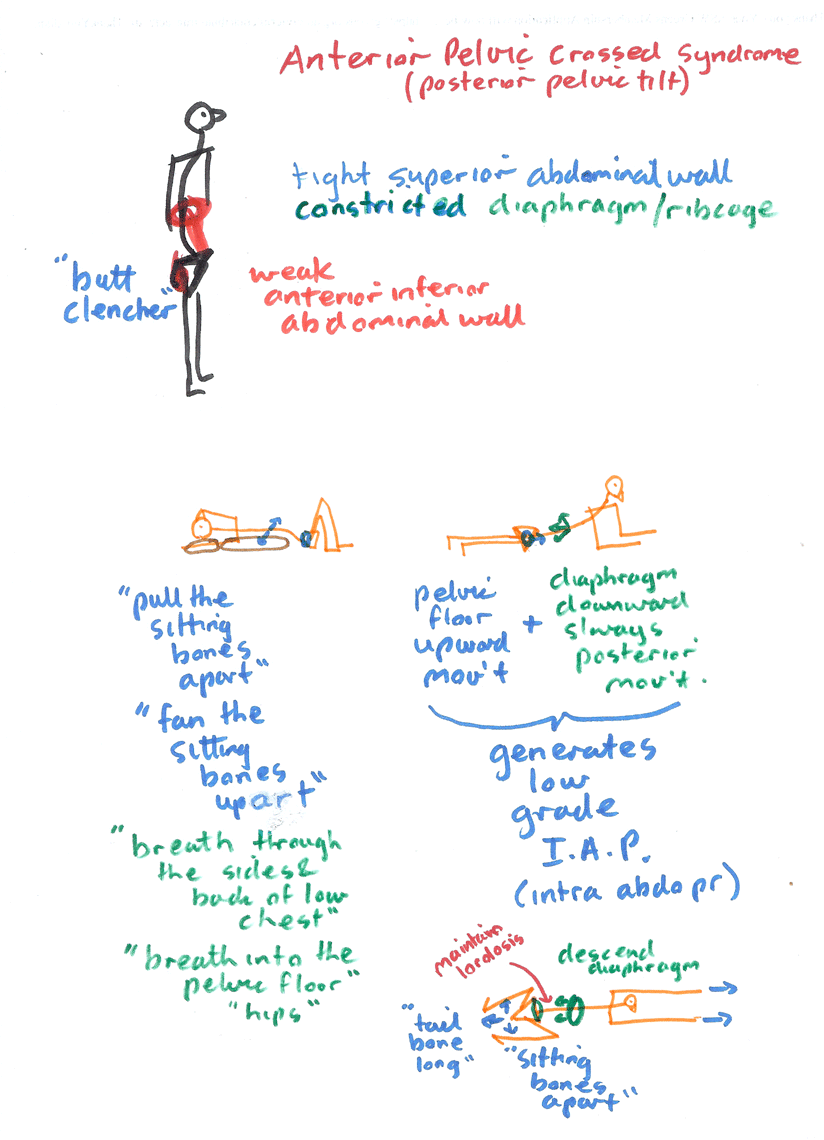
Recruitment of the deep cervical flexor muscles during a postural-correction exercise performed in sitting?
Deborah Falla, Shaun O’Leary, Amy Fagan, Gwendolen Jull
Specific strategies to optimally facilitate postural muscles to retrain postural form are advocated in the clinical management of neck pain. The purpose of this study was to compare the activation of selected cervical, thoracic and lumbar muscles during independent and facilitated postural correction in sitting in 10 subjects with chronic neck pain. Deep cervical flexor (DCF) muscle activity was recorded with custom electrodes inserted via the nose and fixed by suction to the posterior mucosa of the oropharynx. Surface electrodes were placed over the thoracic erector spinae and lumbar multifidus muscles. Root-mean-square EMG amplitude was measured for each muscle across two conditions. In the first condition, subjects were instructed to spontaneously “sit up straight” from a slumped posture without any other guidance from the therapist. In the second condition the therapist provided specific manual and verbal facilitation to assist the patient to correct to an upright pelvic position with a neutral spinal lumbo-pelvic position. Activation of the DCF and lumbar multifidus muscles (P<0.05) were significantly greater when the therapist facilitated postural correction compared to independent sitting correction. Specific postural-correction strategies result in better facilitation of key postural muscles compared to non-specific postural advice. The results of this study highlight the need for clinical skill and precision in postural training of patients with neck pain.
Manual Therapy, 12, 2, 139-143
Pelvic Posture
- sitting with the ischial bones wide apart by lifting one buttock up and placing onto a hand, then lifting the other buttock and placing onto the other hand
- whilst sitting on the hands tilt the pelvis forward and backward until you find a neutral or slightly forward position,
- then pull both your hands out backwards from underneath you
- in this position you should feel that you have a much wider base of support and that there is a forward rather than backward (slouch) directed inclination
- head, shoulders and thorax should feel comfortable with minimal effort required to maintain this position

Stretches and strengthening
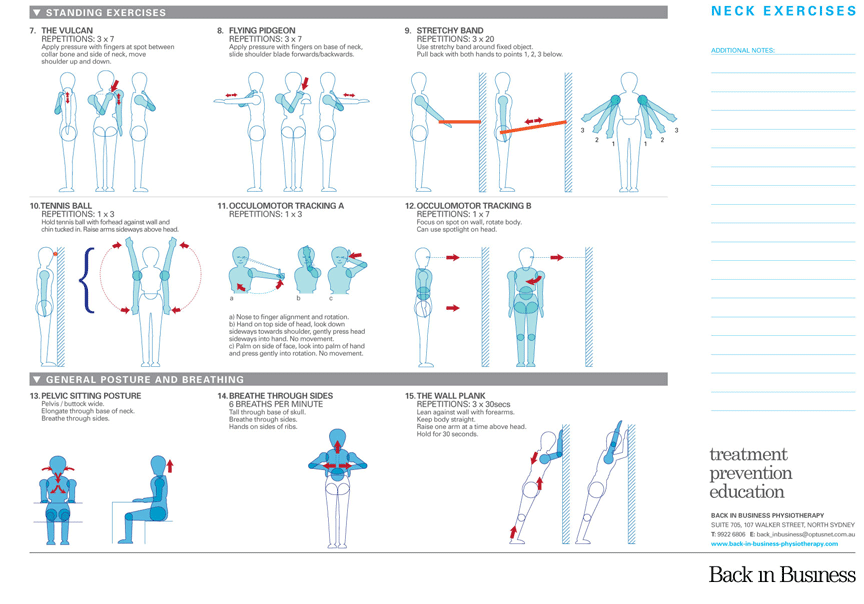
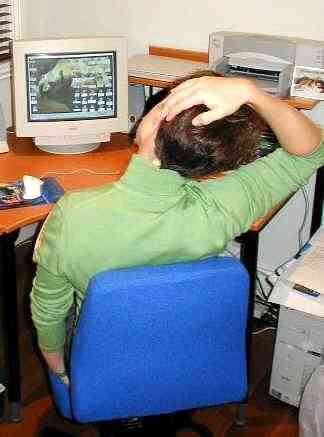
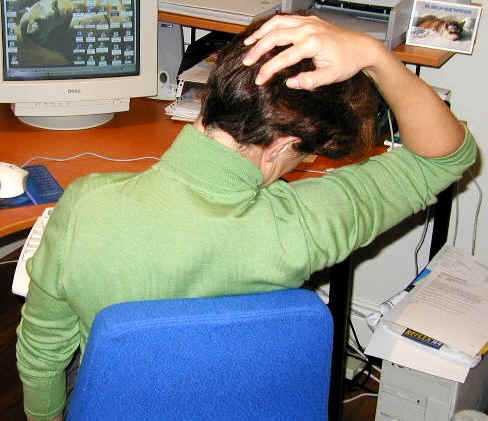
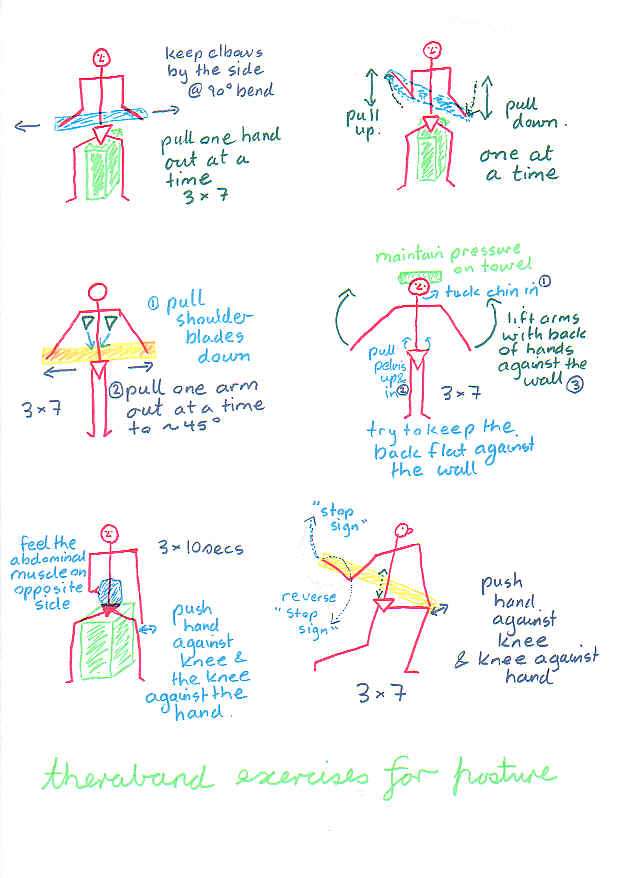
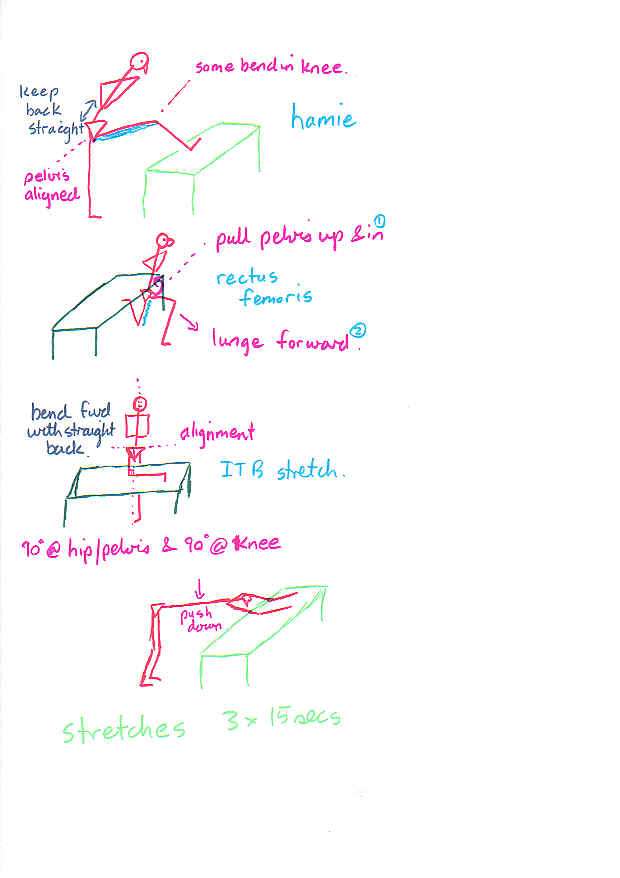

Lateral diaphragmatic breathing and elongation through Occiput-C1/2 should be applied to sitting, standing, cycling, rowing, driving, etc. In the car adjust your mirrors for this posture. The eyes are a very powerful feedback mechanism to induce good posture. Remember that the diaphragm is innervated by the Cervical Spine.
At Back in Business Physiotherapy we have also integrated 'virtual reality training' using the Wiifit to elicit occulo-motor and balance responses during exercises such as skiing, soccer ball heading and balance beam work. We also integrate other forms of feedback such as surface EMG to either increase (eg lower trapezius) or decrease (upper trapezius, sternocleidomastoid) muscle activity.

remember these exercises generally require feedback, and are only as good as the assessment which demonstrated their need - seek guidance from a graduate of Musculoskeletal or Sports Physiotherapy.
to Gorilla Posture (contains useful anatomical pictures and more exercises)
In sports such as rowing, Peter O'Sullivan has argued for a major role of mid - low thoracic extension to power the upper lumbar spine, and a significant role for the gluteus maximus to power the lower lumbar spine. This requires appropriate pelvic positioning to attain a neutral position in the lumbar spine. Similarly, in cycling, the appropriate pelvic positioning will power the leg extensor mechanism thereby protecting the lumbar spine from excessive flexion. Positioning of the shoulder blades through thoracic extension will also alleviate upper trapezius tension in the neck.
see Pelvic Girdle Dysfunction and Muscle Energy Techniques
see Cyclist with pins & needles
Last update : 22 September 2010

























































































































